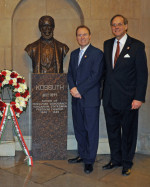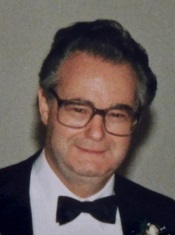AHF eNews | AMSz eHíradó
News
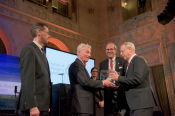 05/12/2017 - AHF receives "Friend of Hungary" award: The Friends of Hungary Foundation held its 4th World Conference from May 5th to the 7th in Budapest. The Foundation is a non-profit organization formally established in 2011 with the aim of promoting the successful activities of Hungarians worldwide. [read more]
05/12/2017 - AHF receives "Friend of Hungary" award: The Friends of Hungary Foundation held its 4th World Conference from May 5th to the 7th in Budapest. The Foundation is a non-profit organization formally established in 2011 with the aim of promoting the successful activities of Hungarians worldwide. [read more]
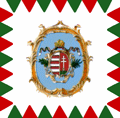 3/17/2017- The American Hungarian Federation's annual commemoration of Hungarian National Day and the anniversary of its historic 1848 democratic revolution led by Louis Kossuth for 2017 was held at the Hungarian Embassy in Washington, DC and coincided witha meeting of the Regional Hungarian Diaspora Council. The keynote addresses were provided by Deputy State Secretary Dr. Péter Szilágyi and AHF Chairman Frank Koszorus, Jr. [read more]
3/17/2017- The American Hungarian Federation's annual commemoration of Hungarian National Day and the anniversary of its historic 1848 democratic revolution led by Louis Kossuth for 2017 was held at the Hungarian Embassy in Washington, DC and coincided witha meeting of the Regional Hungarian Diaspora Council. The keynote addresses were provided by Deputy State Secretary Dr. Péter Szilágyi and AHF Chairman Frank Koszorus, Jr. [read more]
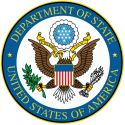 02/08/2017 - AHF continues its outreach to the new administration, submits letter to Secretary of State Tillerson urging the United States to adopt a new approach to bilateral relations with Hungary. The letter urges the administration to "advance U.S. strategic interests and goals in the region as well as promote American values and hold out its accomplishments in a manner that will inspire positive reforms, including the treatment of Hungarian minorities in Hungary’s neighboring countries. [read more]
02/08/2017 - AHF continues its outreach to the new administration, submits letter to Secretary of State Tillerson urging the United States to adopt a new approach to bilateral relations with Hungary. The letter urges the administration to "advance U.S. strategic interests and goals in the region as well as promote American values and hold out its accomplishments in a manner that will inspire positive reforms, including the treatment of Hungarian minorities in Hungary’s neighboring countries. [read more]
 01/24/2017 - AHF submits letter to President Trump on improving American-Hungarian relations and urging his Administration to adopt a new approach to our bilateral relations with Hungary. The letter noted, "misunderstandings have resulted in flawed and self-defeating policies that tend to foster disillusionment with the U.S. among Hungarians and thereby damage U.S. strategic interests." [read more]
01/24/2017 - AHF submits letter to President Trump on improving American-Hungarian relations and urging his Administration to adopt a new approach to our bilateral relations with Hungary. The letter noted, "misunderstandings have resulted in flawed and self-defeating policies that tend to foster disillusionment with the U.S. among Hungarians and thereby damage U.S. strategic interests." [read more]
 January issue of Transylvania Today - Hungarian minority rights continue to be a major issue for the American Hungarian Federation (AHF). What follows is a rundown of recent developments of concern to us in Transylvania. [read more]
January issue of Transylvania Today - Hungarian minority rights continue to be a major issue for the American Hungarian Federation (AHF). What follows is a rundown of recent developments of concern to us in Transylvania. [read more]
 Follow AHF's Twitter account that reminds us of the beauty of Historic Hungary. @regikepek features historic photos from Historic Hungary across the former pre-Trianon Hungarian lands in the Carpathian basin from Transylvania to today's Ukraine, Slovakia, Poland, Serbia, Austria, Slovenia, and Croatia.
Follow AHF's Twitter account that reminds us of the beauty of Historic Hungary. @regikepek features historic photos from Historic Hungary across the former pre-Trianon Hungarian lands in the Carpathian basin from Transylvania to today's Ukraine, Slovakia, Poland, Serbia, Austria, Slovenia, and Croatia.
Featured Books & Articles
AHF presents articles written by distinguished AHF members. AHF encourages all members to submit scholarly essays, books, and other materials which will be featured on our Publications page.
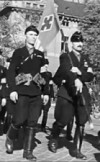 Further Reflections on 19 March 1944 and its Aftermath: A Perfect Storm of Tragedy and Folly: Regarding the history of the Hungarian Holocaust, two fundamental issues should be considered: the unacceptability of “whitewashing” or “cleansing” the Holocaust as well as the unacceptability of ”blackening” history by denying, omitting or belittling rescue initiatives and anti-Nazi activities in Hungary even after Nazi Germany invaded and occupied the country. [read more]
Further Reflections on 19 March 1944 and its Aftermath: A Perfect Storm of Tragedy and Folly: Regarding the history of the Hungarian Holocaust, two fundamental issues should be considered: the unacceptability of “whitewashing” or “cleansing” the Holocaust as well as the unacceptability of ”blackening” history by denying, omitting or belittling rescue initiatives and anti-Nazi activities in Hungary even after Nazi Germany invaded and occupied the country. [read more]
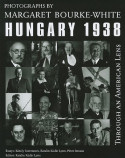 Through an American Lens, Hungary, 1938: Photographs of Margaret Bourke-White. AHFs' Freedom Circle Member, Dr. Katalin Kadar Lynn, recently discovered a treasure trove of mostly unpublished photographs taken during a month-long trip to Hungary in 1938 by Life Magazine's most renowned photojournalist, Margaret Bourke-White. The photographs not only furnish us with a look at pre-WWII Hungary and its people, but because Bourke-White took unsentimental portraits of the major political figures in Hungary, from the far right to the far left, Communists, Fascists, Socialists, Social Democrats, Smallholders, as well as the primary government officials, it provides us with an insight into these individuals and history provides us with the consequences of their actions. Purchase this book on
Through an American Lens, Hungary, 1938: Photographs of Margaret Bourke-White. AHFs' Freedom Circle Member, Dr. Katalin Kadar Lynn, recently discovered a treasure trove of mostly unpublished photographs taken during a month-long trip to Hungary in 1938 by Life Magazine's most renowned photojournalist, Margaret Bourke-White. The photographs not only furnish us with a look at pre-WWII Hungary and its people, but because Bourke-White took unsentimental portraits of the major political figures in Hungary, from the far right to the far left, Communists, Fascists, Socialists, Social Democrats, Smallholders, as well as the primary government officials, it provides us with an insight into these individuals and history provides us with the consequences of their actions. Purchase this book on ![]() [read more]
[read more]
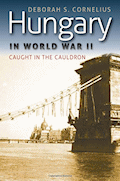 Hungary in World War II: Caught in the Cauldron by Deborah Cornelius, Fordham University Press, New York, 2011. Csaba Zoltani writes: "Deborah Cornelius’ Hungary in World War II: Caught in the Cauldron (Fordham University Press, New York 2011) gives an excellent overview of the events leading up to and the horrendous events of World War II in Hungary. The effect of the Treaty of Trianon, that without plebiscites, truncated Hungary and deprived it of its natural resources and forced a sizeable portion of its population to live under alien jurisdiction, set the political and sociological climate in Hungary from the 1920's on. Cornelius gives an excellent overview of the readjustment that expressed itself in the politics and led to the belief that revision of the treaty was only possible through German intervention." [read more] Buy it now on AHF's Amazon Store!
Hungary in World War II: Caught in the Cauldron by Deborah Cornelius, Fordham University Press, New York, 2011. Csaba Zoltani writes: "Deborah Cornelius’ Hungary in World War II: Caught in the Cauldron (Fordham University Press, New York 2011) gives an excellent overview of the events leading up to and the horrendous events of World War II in Hungary. The effect of the Treaty of Trianon, that without plebiscites, truncated Hungary and deprived it of its natural resources and forced a sizeable portion of its population to live under alien jurisdiction, set the political and sociological climate in Hungary from the 1920's on. Cornelius gives an excellent overview of the readjustment that expressed itself in the politics and led to the belief that revision of the treaty was only possible through German intervention." [read more] Buy it now on AHF's Amazon Store! ![]()
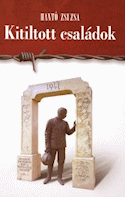 Zsuzsa Hanto: "Kitiltott Családok" (Banished families. Communist repression of "class enemies" in Hungary) Hantó Zsuzsa az elszenvedok és visszaemlékezok emlékeit is magában foglaló könyv történész szerzoje nem kevesebbre vállalkozik, mint az 1950-ben és 1951-ben vidékrol és Budapestrol a kommunista rezsin által kitelepített, kitiltott családok szenvedéseit, megpróbáltatásait, nem egyszer pusztulását mutatja be.
Zsuzsa Hanto: "Kitiltott Családok" (Banished families. Communist repression of "class enemies" in Hungary) Hantó Zsuzsa az elszenvedok és visszaemlékezok emlékeit is magában foglaló könyv történész szerzoje nem kevesebbre vállalkozik, mint az 1950-ben és 1951-ben vidékrol és Budapestrol a kommunista rezsin által kitelepített, kitiltott családok szenvedéseit, megpróbáltatásait, nem egyszer pusztulását mutatja be.
[tovább]
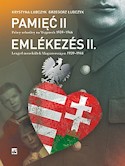 AHF Book Review: Rememberance (Pamiec): Polish Refugees in Hungary 1939-1946 (Emlékezés - Lengyel Menekültek Magyarorszagon 1939-1946) by Grzegorz and Krystyna Lubczyk.
AHF Book Review: Rememberance (Pamiec): Polish Refugees in Hungary 1939-1946 (Emlékezés - Lengyel Menekültek Magyarorszagon 1939-1946) by Grzegorz and Krystyna Lubczyk.
Throughout its history, Hungary offered refuge to a wide variety of ethnicities trying to escape persecution in their homelands. At the beginning and throughout the Second World War, Poles, including considerable number of its military, sought and received refuge from Nazi and Stalinist persecution. Eventually most of the soldiers went on and joined the Allied war effort and played an important part in the defeat of Nazi Germany.
A new two volume work by the former Polish ambassador to Hungary, Grzegorz Lubczyk and his wife Krystyna under the patronage of the Polish president, document the story of the Polish refugees in Hungary in Emlékezés (Pamiec or Rememberance) Polish Refugees in Hungary 1939-1946. The first volume gives an overview of what transpired and the second volume gives personal stories of many of the nearly 120,000 Polish refugees who were granted redoubt at nearly 200 locations scattered throughout Hungary.
[Read the AHF Book Review]
[ >> GO to the AHF News Archive]
PRIVACY NOTICE:
Your email is safe!AHF will not share its mailing list with anyone...Period.
DISCLAIMER:
The American Hungarian Federation does not necessarily endorse the content or opinions found in the external sites found this eNewsletter or those expressed by its individual members and member organizations...
All Rights Reserved

2017 Membership Drive!
We need your support. Please take a moment to join, renew and support your AHF and help make our community's voice stronger in Washington! Membership starts at only $56.00 per year. We are all volunteer and 100% of your support goes directly to important programs. [join now!]
Moments in History
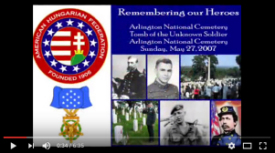
Memorial Day 2007:
AHF lays wreath at
the
Tomb of the Unknown Soldier
The American Hungarian Federation's 2007 Memorial Day Commemoration Ceremony at Arlington National Cemetery included a wreath laying the Tomb of the Unknown Soldier. About 40 members and guests and throngs of tourists witnessed the special ceremony as AHF President Atilla 
March 15, 1990:
AHF presents the Louis Kossuth Bust in the United States Capitol
"A Gift to the People of the United States from the American Hungarian Federation"
To celebrate the friendship and shared values between the people of the United States and those of Hungarian descent, the American Hungarian Federation commissioned a bronze bust of Lajos Kossuth and offered it to U.S. Congress in 1990. [Read more and Hear Louis Kossuth Speak!
March 15, 1848
 March 15 is Hungarian National Day commemorating the 1848 War of Independence and fight for Liberation and Democracy. Kossuth
Lajos (Louis) (b. 1802, d. 1894, pronounced co-shoot luh-yôsh) was Governor of Hungary and leader during fight for independence which
was eventually defeated by the union of the royalist Austrian Habsburg
and Russian Czarist Armies (1848 - 1849). Kossuth envisioned a federation
in the Kingdom of Hungary in which all nationalties participated in a
vibrant democratic system based on fundamental democratic principles such
as equality and parliamentary representation. The bloody conflict eventually
led to a great compromise known as the "Austro-Hungarian Empire,"
in which Hungary gained some autonomy, although Kossuth would have no
part in it and demanded full indepependence until his death. It also inadvertantly set the seeds for Hungary's dismemberment after WWI. [read more]
March 15 is Hungarian National Day commemorating the 1848 War of Independence and fight for Liberation and Democracy. Kossuth
Lajos (Louis) (b. 1802, d. 1894, pronounced co-shoot luh-yôsh) was Governor of Hungary and leader during fight for independence which
was eventually defeated by the union of the royalist Austrian Habsburg
and Russian Czarist Armies (1848 - 1849). Kossuth envisioned a federation
in the Kingdom of Hungary in which all nationalties participated in a
vibrant democratic system based on fundamental democratic principles such
as equality and parliamentary representation. The bloody conflict eventually
led to a great compromise known as the "Austro-Hungarian Empire,"
in which Hungary gained some autonomy, although Kossuth would have no
part in it and demanded full indepependence until his death. It also inadvertantly set the seeds for Hungary's dismemberment after WWI. [read more]
Featured Hungarian

"Iron Lady" Katinka Hosszú
(b. 3 May 1989, Pécs, Hungary)
Katinka Hosszu is a World Cup and multiple Gold Medal winning Hungarian Olympian and one of the most versatile swimmers in the world. Hosszu holds two-thirds of the Hungarian National Records. Hosszu won 3 golds and 1 silver at the Rio Olympics (shattering the world record by two seconds finishing second to Maya DiRado of the US by just six one hundredths of a second. She also set an Olympic record) and the most wins of any swimmer ever in the FINA World Cup Series with over 200 wins, setting multiple records along the way. At the World Championships, she's won gold in 2009 (400m individual medley), two golds in 2013 (200 and 400m individual medley), and 2 golds in 2015 (200 and 400m individual medley).
Nicknamed the "Iron Lady," she has since turned into a fast growing International brand. She is the first race-prize dollar millionaire in swimming history. She currently swims for the Vasas SC, under husband and head coach Shane Tusup. Katinka was swim coached by her grandfather, László Bakos until the age of 13. Hosszú met her future husband Shane Tusup, when they were both freshmen at the University of Southern California. After being crushed under the pressure of expectations at the 2012 London Olympics, and not medalling, she asked her then boyfriend Tusup to become her coach, replacing her coach since her U.S.C. swim team days, Dave Salo. After the Olympics, at the Beijing World Cup swim meet, she competed in 8 events, medalling in 5 of them, leading to Chinese newspapers says she was made out of iron, leading to her nickname, the Iron Lady. Hosszú married Tusup in 2013. Read more on [Hungarian Olympic Triumph]
Waterpolo Team Hungary!
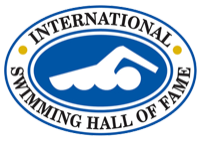
Hungary ranks first in medals in Modern Pentathlon and Water Polo. In 2016, the International Swimming Hall of Fame (ISHOF), recognized by FINA, the international governing body for the Olympic aquatic sports as its official Hall of Fame, announced that Water Polo TEAM HUNGARY became the first team in the history of the Hall to be recognized as an Honoree. Read more on
[Hungarian Olympic Triumph]
AHF Members' Corner:
Featured Member
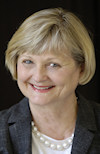 Katalin Kádár
Lynn, Ph.D. is a sustaining AHF Kovats Circle Member. She was born in Budapest and emigrated with her family
to Germany at the end of WWII and then came to the US as part of the Displaced
Persons immigration program. She was educated in the United States ( BA
from the University of Colorado and an MLA from Washington University
in St. Louis, MO). After a long career in the world of business, including
a stint as a business professor at Lindenwood University in St. Charles,
MO, she returned to graduate school to obtain a PhD at ELTE in Budapest and was awarded her PhD with honors. She is a publisher and author specializing in 20th century history, with an emphasis on
WWII, the Cold War, and U.S.–East European political relations
and Émigré Political Movements. [Read more about her] and purchase her books!
Katalin Kádár
Lynn, Ph.D. is a sustaining AHF Kovats Circle Member. She was born in Budapest and emigrated with her family
to Germany at the end of WWII and then came to the US as part of the Displaced
Persons immigration program. She was educated in the United States ( BA
from the University of Colorado and an MLA from Washington University
in St. Louis, MO). After a long career in the world of business, including
a stint as a business professor at Lindenwood University in St. Charles,
MO, she returned to graduate school to obtain a PhD at ELTE in Budapest and was awarded her PhD with honors. She is a publisher and author specializing in 20th century history, with an emphasis on
WWII, the Cold War, and U.S.–East European political relations
and Émigré Political Movements. [Read more about her] and purchase her books!
In Memoriam
Geza Cseri, Father, Grandfather, Husband, Engineer, US Army Veteran, former science and technology advisor to NATO, AHF member, patriot, was born to Joseph and Mary Cseri on June 3, 1936 in Cegled, Hungary. He lived in the town of Abony along with his older brother, Zoli. They enjoyed a comfortable home with orchards and vineyards until they had to flee in September of 19 44 due to advancing Russian forces. His family relocated to the most western part of Hungary, near Pozsony - Bratislava, and from there to Germany and eventually France where they became refugees. Geza was 9 years old.
44 due to advancing Russian forces. His family relocated to the most western part of Hungary, near Pozsony - Bratislava, and from there to Germany and eventually France where they became refugees. Geza was 9 years old.
[read more]


